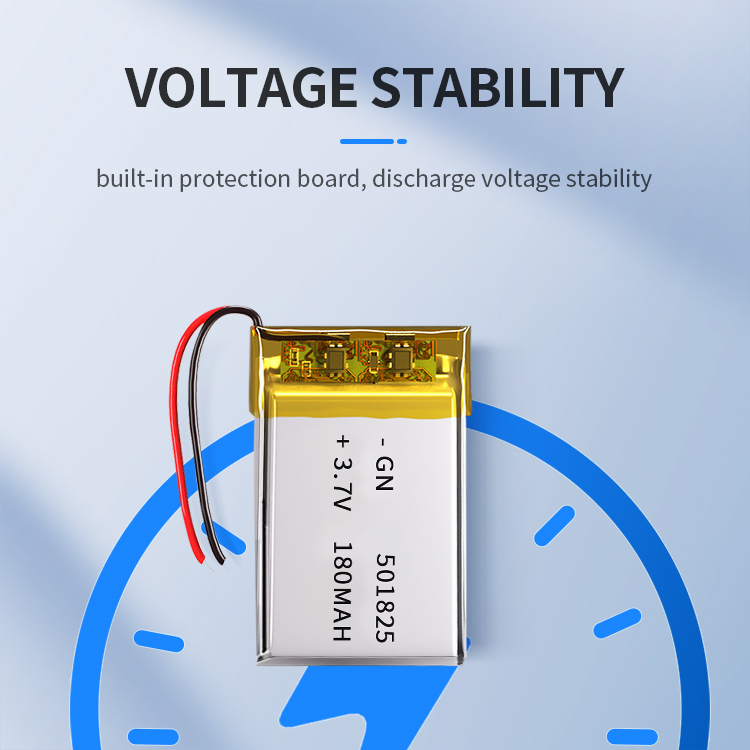

Electronic enthusiasts provide you with the principle technology of nickel-cadmium batteries. The principle technology of nickel-cadmium batteries is that nickel-cadmium batteries can be charged and discharged repeatedly for more than 500 times, and are economical and durable. Its internal resistance is small, its internal resistance is very small, it can charge quickly, and it can provide large current to the load and discharge
Principle and technology of nickel-cadmium battery
Nickel-cadmium batteries can be charged and discharged more than 500 times and are economical and durable. Its internal resistance is small, its internal resistance is very small, it can charge quickly, and it can provide large current to the load, and its voltage changes very little during discharge. It is a very ideal DC power supply battery. Compared with other types of batteries, nickel-cadmium batteries can withstand overcharge or overdischarge. The discharge voltage of nickel-cadmium batteries varies depending on the discharge device. Each unit cell (Cell) is approximately 1.2V. The battery capacity unit is Ah (ampere-hour) and mAh (milliamp-hour). The limit value of the discharge end voltage is called is the "discharge termination voltage". The discharge termination voltage of nickel-cadmium batteries is 1.0/cell (cell is each unit battery). The self-discharge rate is low, and the characteristics of the nickel-cadmium battery will not deteriorate even if it is left for a long time. It can completely restore its original characteristics after being fully charged. It can be used in the temperature range of -20℃+60℃. Because the unit battery uses a metal container, it is strong and durable; it is completely sealed and there is no electrolyte leakage, so there is no need to replenish the electrolyte.
The key to improving battery performance and extending battery life is to avoid memory effects and over-discharge. Nickel-cadmium batteries have a memory effect, that is, after nickel-cadmium batteries are charged and discharged at low capacity several times. If a large-capacity charge and discharge is to be performed, the battery will not work properly. This situation is called the memory effect. The memory effect causes the discharge end voltage to be set higher in video recorders and cameras. As the operating voltage decreases, the battery capacity appears to decrease. However, the decrease in discharge voltage may be temporary caused by one or two complete discharges. Phenomenon. The memory effect prevents the battery's performance from being fully utilized and also brings great inconvenience to shooting. Therefore, when using, you should pay attention to using a charger with charge and discharge performance, such as Sony's BC-1WDCE, to avoid the memory effect. When using general chargers such as BC-1WA and BC-1WB, the battery can be charged about 10 times. Discharging after charging can also prevent the memory effect.
Nickel-cadmium battery (nickel-cadmiumbattery) is an alkaline battery that uses metallic cadmium as the negative active material and nickel hydroxide as the positive active material. The positive and negative electrode materials are filled into perforated nickel-attached steel strips (or nickel strips) respectively, and the plates are made by drawing, rolling, sintering, forming or pasting, drying, and pressing. They are made of polyamide non-woven fabrics. Fabric and other materials are used as the isolation layer; potassium hydroxide aqueous solution is used as the electrolyte solution; the electrodes are wound or stacked and assembled in a plastic or nickel-plated steel shell. The nominal voltage of nickel-cadmium batteries is 1.2V, and there are many types such as cylindrical sealed type (KR), button type (KB), square sealed type (KC), etc. It has the characteristics of wide operating temperature range, long cycle and storage life, and can be discharged at a larger current. However, it has a "memory" effect and often causes a decrease in electrical performance due to regular incorrect use. The battery expression of nickel-cadmium battery is: (-)Cd︱KOH(NaOH)︱NiOOH(+) The battery reaction is: When discharging: Cd+NiOOH+H2O→Ni(OH)2+Cd(OH)2 When charging: Ni(OH)2+Cd(OH)2→Cd+NiOOH+H2O Nickel-cadmium (Ni-Cd) rechargeable batteries are widely used in modern life.
It is known that the electrolyte solution of a certain nickel-cadmium battery is KOH solution, and its charging and discharging are carried out as follows: Cd+2NiOOH+2H2O=Cd(OH)2+2Ni(OH)2 (discharge from left to right, charge from right to left) Charging anode: 2Ni(OH)2-2e—+2OH-==2NiOOH+2H2O Charging cathode: Cd(OH)2+2e-==Cd+2OH-Discharging anode: 2NiOOH+2H2O+2e-==2Ni(OH )2+2OH-discharge cathode: Cd+2OH--2e==Cd(OH)2

Popular recommendation
CR1225 battery.American light-absorbing and luminous solar cells will break through the conversion e
2023-10-083V Button battery.Samsung develops graphene battery technology that charges 5 times faster
2023-10-08no 5 alkaline battery!Breakthrough domestic technology for lithium battery separators
2023-10-08AG6 battery.Process flow of 18650 cylindrical battery sleeve labeling machine
2023-10-09cr2032 button battery.Improvement of power battery performance from high-power fast charging
2023-10-08AG4 battery.BMW announces innovative battery technology in 2026 using solid electrolyte
2023-10-14battery aaa alkaline!Exploring the causes and countermeasures of thermal runaway in lithium-ion batt
2023-10-08wall-mounted energy storage battery.High nickel brings high challenges Thermal management system pla
2023-10-08LR626 battery!Entering the market with Japanese power lithium battery technology, Vision intends to
2023-10-0818650 lithium-ion battery.Introduction to new battery technology after lithium-ion rechargeable batt
2023-10-08802540 lipo battery.Cylindrical lithium battery 21700 from a technical perspective
2023-10-093.2v 100ah lifepo4 battery.Research on high-nickel ternary cathodes: Nuggets of ternary precursors,
2023-10-08